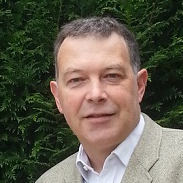Brillouin Scattering and Optomechanics
A special issue of Applied Sciences (ISSN 2076-3417). This special issue belongs to the section "Optics and Lasers".
Deadline for manuscript submissions: closed (31 May 2018) | Viewed by 25397
Special Issue Editors
Interests: brillouin light scattering in optical fibers; optoacoustics; optical fiber tapers; optical fiber sensor
Interests: brillouin light scattering in optical fibers and microwires; optomechanical structures; acousto-optics; opto-acoustics; phononic crystals; acoustic metamaterials; phoxonic crystals; surface acoustic waves
Special Issue Information
Dear Colleagues,
The science of the interaction of sound and light, including acousto-optics, has recently witnessed the emergence of new topics and directions that lead to novel fundamental effects and applications. Optomechanical structures, including phoxonic crystals—also known as simultaneous photonic and phononic crystals—are presently being investigated in order to obtain very efficient interactions in tiny volumes. They allow for the control of phonons with photons, but also for ultimate sensing applications. Concurrently, opto-acoustical interactions in micro- and nanoscale optical resonantors, fibers, and waveguides are being seen in a new light thanks to new materials and structures, leading to a renewed view of Brillouin scattering.
This Special Issue of the journal Applied Sciences “Brillouin Scattering and Optomechanics” aims to cover recent advances in the science of the interaction of light and sound, including theoretical and experimental contributions.
Dr. Jean-Charles Beugnot
Dr. Vincent Laude
Dr. Thibaut Sylvestre
Guest Editors
Manuscript Submission Information
Manuscripts should be submitted online at www.mdpi.com by registering and logging in to this website. Once you are registered, click here to go to the submission form. Manuscripts can be submitted until the deadline. All submissions that pass pre-check are peer-reviewed. Accepted papers will be published continuously in the journal (as soon as accepted) and will be listed together on the special issue website. Research articles, review articles as well as short communications are invited. For planned papers, a title and short abstract (about 100 words) can be sent to the Editorial Office for announcement on this website.
Submitted manuscripts should not have been published previously, nor be under consideration for publication elsewhere (except conference proceedings papers). All manuscripts are thoroughly refereed through a single-blind peer-review process. A guide for authors and other relevant information for submission of manuscripts is available on the Instructions for Authors page. Applied Sciences is an international peer-reviewed open access semimonthly journal published by MDPI.
Please visit the Instructions for Authors page before submitting a manuscript. The Article Processing Charge (APC) for publication in this open access journal is 2400 CHF (Swiss Francs). Submitted papers should be well formatted and use good English. Authors may use MDPI's English editing service prior to publication or during author revisions.
Keywords
-
Optomechanics and optomechanical structures
-
Phoxonics (simultaneous photonic and phononic crystals and structures)
-
Brillouin light scattering in optical fibers, wires, and waveguides
-
Theory of the interaction of photons and phonons
-
Coherent generation of ultrasound by light
-
Interactions of ultrasound with optical/electromagnetic waves
-
Acousto-optics at the micro- and nanoscale






